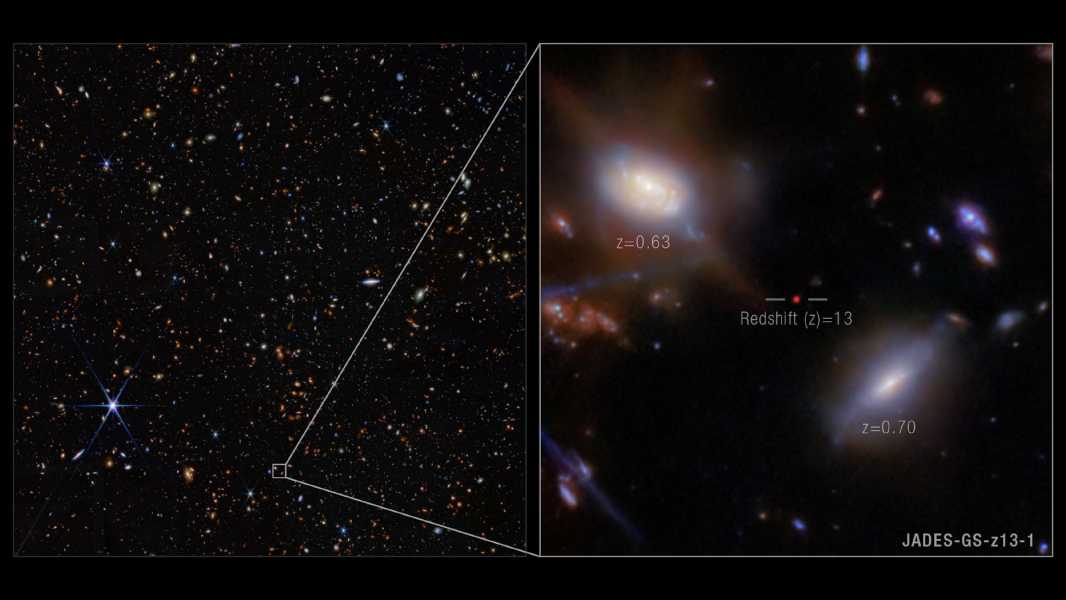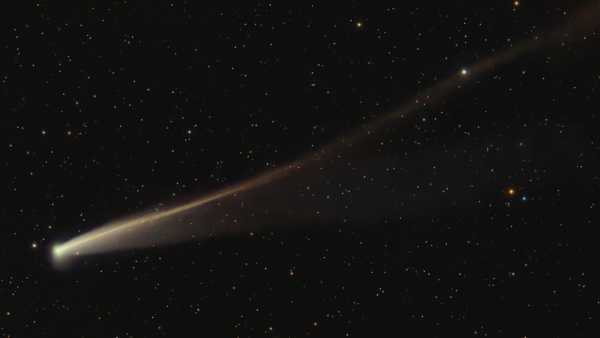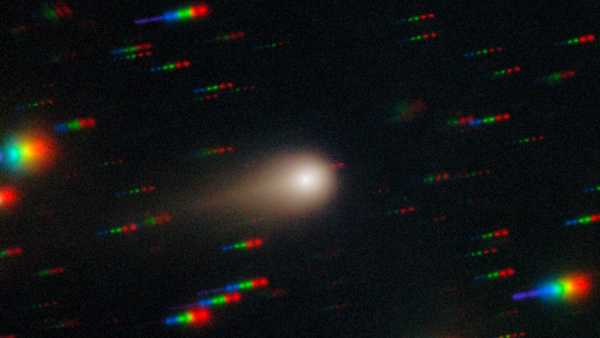
JWST has detected ultraviolet light from the ancient galaxy JADES-GS-z13-1, providing the earliest evidence yet of the Era of Reionization. (Image credit: NASA, ESA, CSA, JADES Collaboration, J. Witstok (University of Cambridge/University of Copenhagen), P. Jakobsen (University of Copenhagen), A. Pagan (STScI), M. Zamani (ESA/Webb))
New data from the James Webb Space Telescope (JWST) reveals that an ancient galactic beacon is shining through the fog of the early universe.
Scientists have detected intense ultraviolet (UV) light coming from a distant, ancient galaxy. The results, published March 26 in the journal Nature, suggest that the universe's first stars changed their environment even earlier than expected.
Shortly after the Big Bang, the universe was a mixture of protons, neutrons, and electrons. As the universe cooled, protons and neutrons merged to form positively charged hydrogen ions, which then attracted negatively charged electrons to create a cloud of neutral hydrogen atoms. This fog absorbed short-wavelength light, including ultraviolet light, preventing it from spreading throughout the universe.
But when the first stars and galaxies began to form, they emitted enough ultraviolet light to knock electrons out of hydrogen atoms, releasing more ultraviolet radiation. Although this “Era of Reionization” is thought to have ended about a billion years after the Big Bang, scientists are still unsure of the exact time when the first stars appeared—or when the Era of Reionization began.
New results may help refine that timeline. Using JWST, the researchers observed an ancient galaxy known as JADES-GS-z13-1. This galaxy is so far from Earth that we see it as it was just 330 million years after the Big Bang.
In the JWST data, scientists spotted bright light at a specific wavelength known as Lyman-alpha radiation, produced by hydrogen. Although the light was originally ultraviolet, the expansion of the universe over 13 billion years has stretched it into infrared, making it visible to JWST's sensors.
For Lyman-alpha radiation to reach Earth today, JADES-GS-z13-1 would have had to ionize enough hydrogen around it, allowing ultraviolet radiation to escape—something scientists didn't expect so early in the universe's history.
“GS-z13-1 was observed when the Universe was only 330 million years old, yet it shows a remarkably clear, distinctive Lyman-alpha signature that can only be seen after the surrounding fog has completely cleared,” study co-author Roberto Maiolino, an astrophysicist at the University of Cambridge, said in a statement. “This result was completely unexpected by theories of early galaxy formation and surprised astronomers.”
Researchers still don't know what caused the Lyman-alpha radiation in JADES-GS-z13-1. The light could come from extremely hot and massive early stars, or it could be the result of an early supermassive black hole.
“We really shouldn’t have found a galaxy like this, given our understanding of how the universe evolved,” study co-author Kevin Hainline, an astronomer at the University of Arizona, said in a statement. “We might imagine the early universe shrouded in a thick fog that would make it extremely difficult to detect even powerful beacons breaking through, but here we see a ray of light from this galaxy piercing the veil.”
“This exciting emission line has huge implications for understanding how and when the Universe reionized,” Heinlein concluded.
Sourse: www.livescience.com





